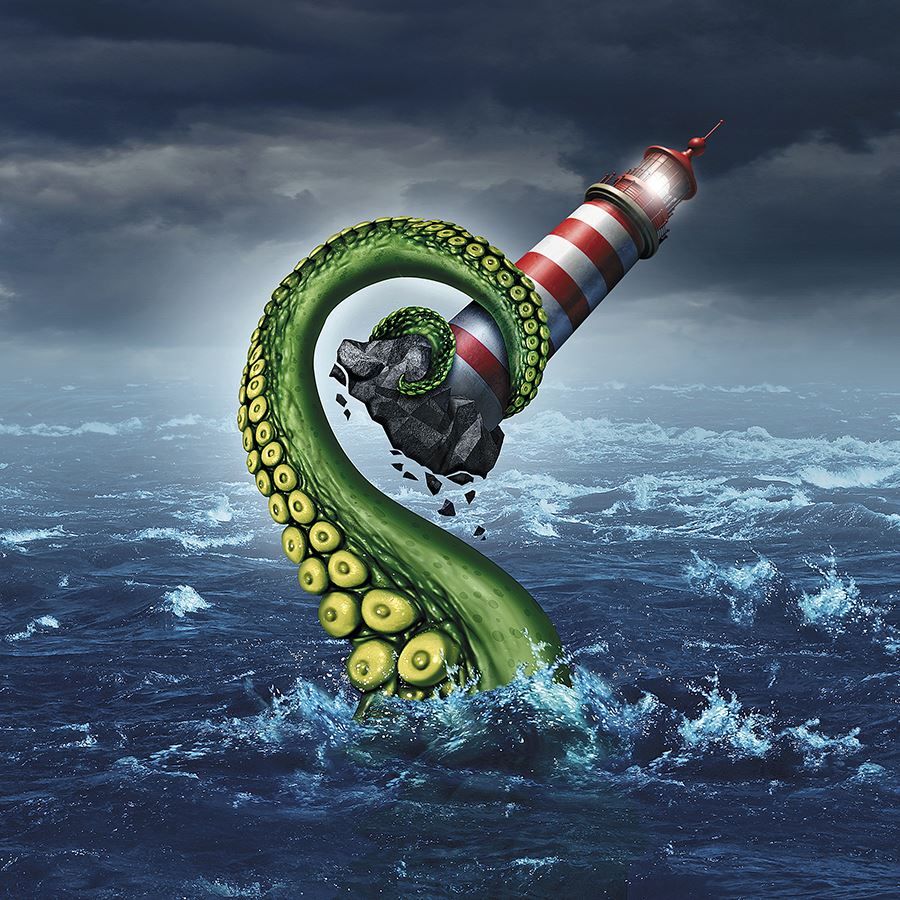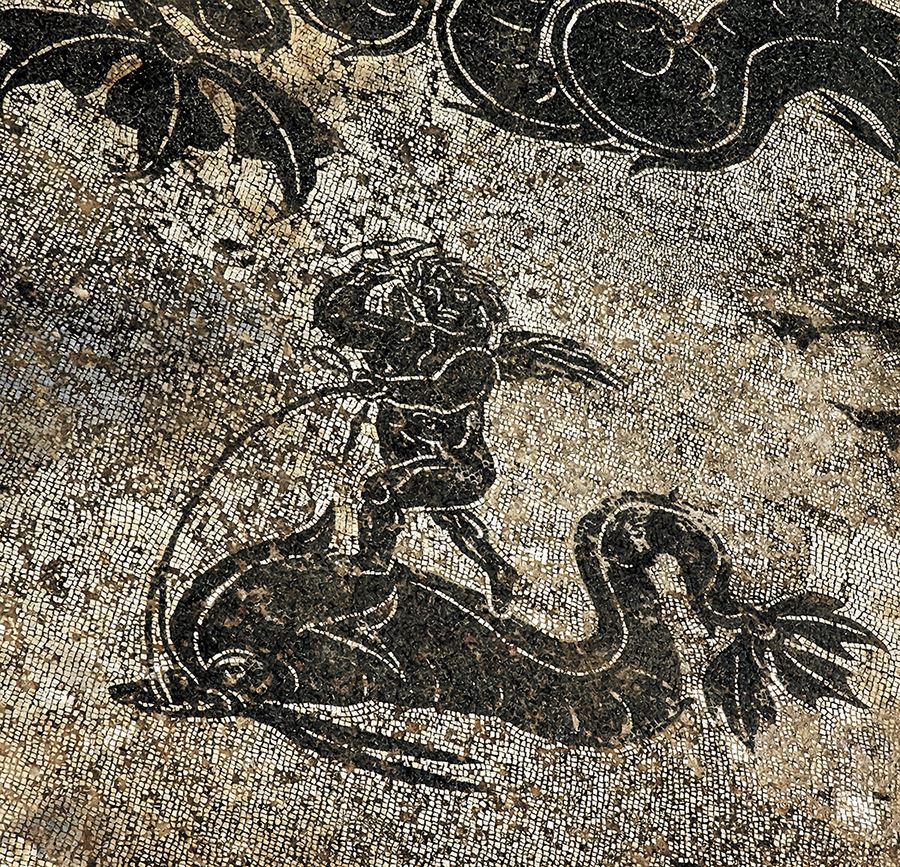
I have to be honest with you. Whenever we went boating and I was bobbing about alone while everyone circled around to pick me up, my heart literally beat faster—and not because I was just thrown from a tube. Just the thought of all that dark, impenetrable water beneath me was enough. If I kick my feet extra fast while treading water, I’d think to myself, I’ll be able to kick anything in the head before it gets me.
I’m not going to tell you how old I was when I stopped this silly habit (or even, ahem, if I stopped), because I’m not out to embarrass myself. I think it’s a fairly universal experience that floating alone in deep water can feel like leaning over a precipice where prickly old myths and slit-eyed legends lurk in the dark, and the experience dredges up all sorts of thoughts of What if… and Could it be possible… that stop just on the verge of laughability.
Maybe you’re a seasoned Great Lakes boater with nothing to fear—nothing that’s water-bound and serpentine, anyway—and you’re reading this with eye rolls and shakes of your head. But after doing some digging, it has to be said there are enough locals who are undecided on the matter that it makes for some good storytelling and maybe some goosebumps as well. With as many shipwrecks as there have been on these massive lakes, it’s not surprising some turn to tales of the supernatural. So gather around the proverbial campfire everyone, because we’re going a’hunting through the years to uncover stories of monsters of the deep that still haunt the Great Lakes.

Lake Superior
You’ve heard of mermaids of the high seas before, but have you heard the Lake Superior accounts of their male counterparts? They weren’t singing love songs and combing their hair with forks, that’s for sure. Back in 1812, a merman was spotted by Northwest Fur Company voyageurs traveling near Thunder Bay Island. Other voyageurs later chimed in with sightings of the creature in the same area. According to local Native Americans, the merman was Manitou Niba Nibas, the god of lakes and waters.
Other varieties of lake monsters have popped up. In 1895, the captain of the steamer S.S. Curry witnessed a sea serpent with a 15-foot neck keeping pace with his ship off Whitefish Point. Two years later, a giant squid reportedly attacked a group of Detroit yachtsmen near Duluth, Minn.
Ellen Van Laar, a Lake Superior resident with a Master of Arts degree from Central Michigan University, spoke with me more on the matter of sightings like these. Van Laar loves creating numberless paintings that capture the essence of what is called the Lake Superior dragon.
“There are indigenous stories that vary place to place, some negative, others positive,” she shares. “‘Mitch’ is a derivative of Mishibeichu (many spellings), who is a powerful aspect of energy/god who often struggles with the Thunderbird. Some say that Mitch follows me around as I get so many dragon-ish pictures, just from shadows, waves, rocks and wood.”
Van Laar shared a variety of beliefs she’s come across.
“Many people in Batchawana Bay still believe that the ‘dragon’ exists. This may be a spiritual or an actual existence,” explains Van Laar. “Some offer tobacco to the waters to appease him. Some believe that he killed certain relatives that drowned in the water.”
Van Laar also shared various references to the dragon from Peter Unwin’s book, The Wolf’s Head. Stories included that of Jean Allouez, who wrote about sacrifices to the spirit Missibizi in 1667 to make sturgeon rise in the water. Through the years the dragon has also been described as having a turtle head and even bearing the shape of Lake Superior itself.
“There is a belief among many that the creature lives in caves below the surface of Lake Superior. There are stories about the dragon snatching children and causing storms when angry. Many native references refer to the dragon as a shape shifter capable of tricking others. Even some of the Jesuits who lived near/on Lake Superior claimed to have seen the dragon. Others think that the dragon may look more like the giant snake that many explorer/immigrants claim to have seen in the Great Lakes.”
.jpg_1600.jpg)
Lake Ontario
Speaking of snakes, multiple accounts of sea serpent sightings near Kingston grew so numerous that locals simply dubbed the creature “Kingstie.” Other deep creature sightings date back to pre-Columbus times, when Seneca legend told of a huge serpent-like beast called Gaasyendietha, or the meteor dragon, that could apparently fly and spew fire from its mouth.
The Oswego Palladium-Times published an 1833 account by Captain Abijah Kellogg and crewmembers, who ran across a massive 175-foot blue serpent on their way to Kingston Harbor. Lacking a clear head, the creature tapered off at either end like a giant earthworm and apparently swam past their ship before fluidly retreating up the St. Lawrence.
A different variation of creature was described in the Kingston Daily News when fisherman say a log-like creature with a crocodile mouth took a bite out of an oar. Later sightings include a basking bluish-grey serpent covered in stiff bristles, an eel-like creature with a mane, an enormous serpent with “eyes like balls of fire,” and a one-eye, two-antlered creature. A mixed bag, to be sure.
For More Information
www.abovetopsecret.com
www.absolutemichigan.com
www.articles.latimes.com
www.castlebluff.com
www.mitchthedragon.blogspot.com
www.snopes.com
www.thunderbay.ca
www.toms-randomthoughts.blogspot.com
www.unexplained-mysteries.com
www.wwmt.com

